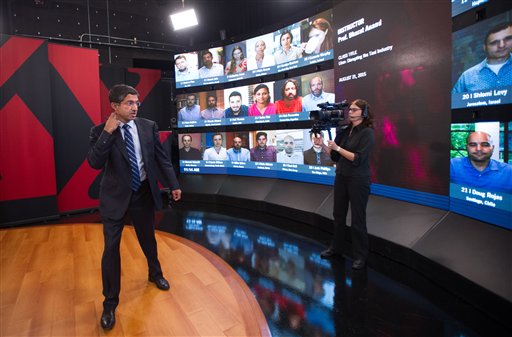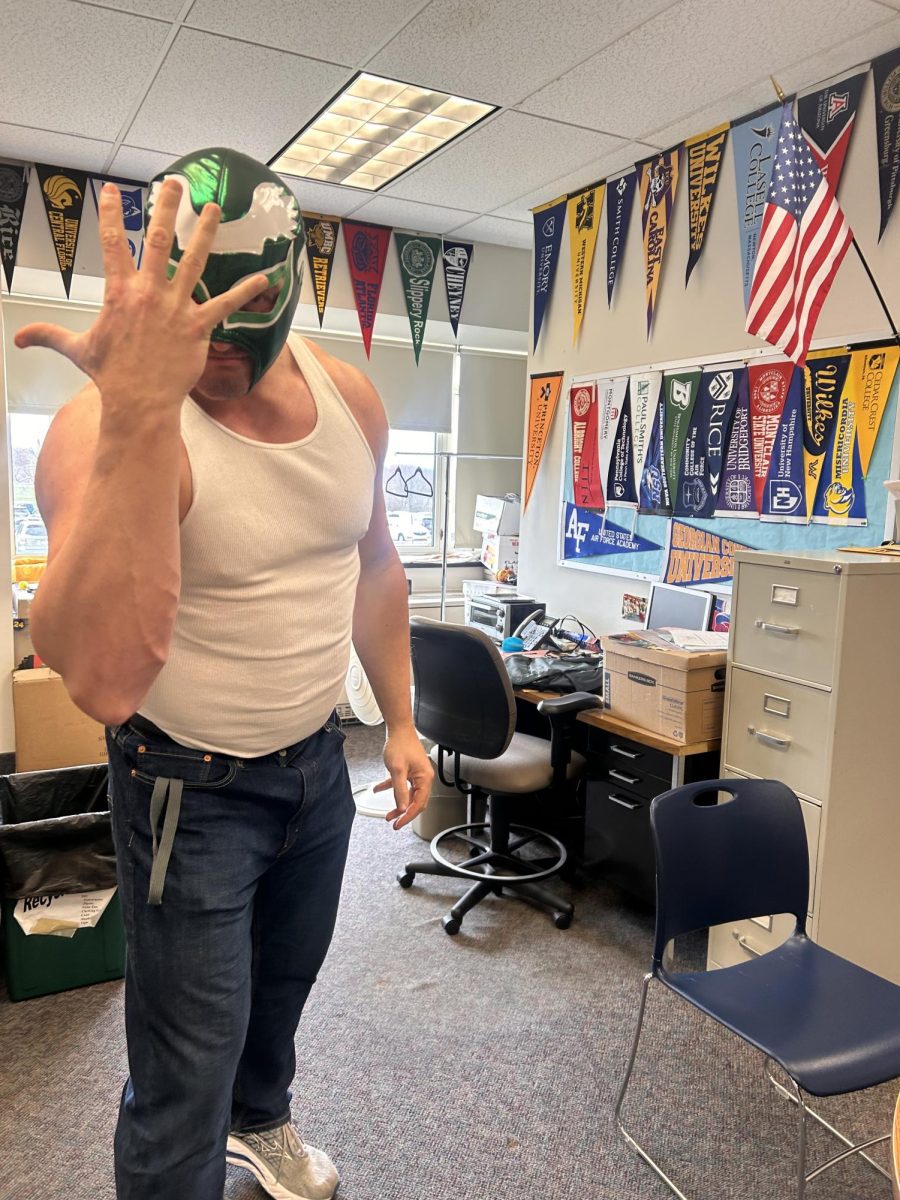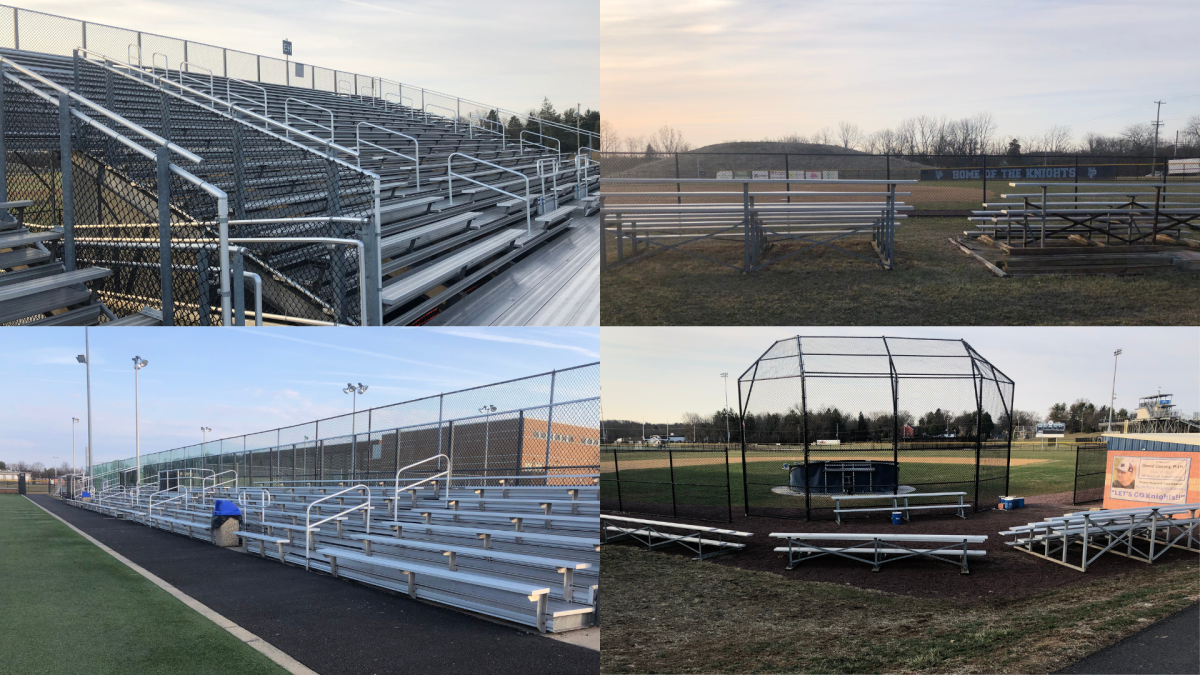Blink of an App: Technology Sparks the Path for Endless Growth

Harvard Business School Professor and faculty chair of HBX Bharat Anand demonstrates HBX Live, an online classroom that allows real-time interaction between professors and students from around the world, at the WGBH television studios in Boston, Friday, Aug. 21, 2015. (AP Photo/Gretchen Ertl)
November 10, 2015
Technology: noun, the application of scientific knowledge for practical purposes, especially in industry (Google).
With social media becoming an ever growing trend in our modern society, advancements not ever thought feasible continue to shape the lives of many. Now with the swipe and touch of a finger to a glass 6 inch screen, people can speak with a business associate in China or post their innermost grievances to any social media of their choosing. Accessibility to knowledge is what technology has created for the most eager of beavers. Within seconds, search engines provide credible answers to an endless amount of questions. Taking these responses, students in particular can better understand a subject or find inspiration for their next research paper.
Though some individuals see this path as harmful to society, the good outweighs the bad when it comes to everyday life. Convenience is crucial for any person working in the research field. Having up to date information on the latest studies keeps data fresh and accurate. This in turn allows for new discoveries to be put into action in the form of anything from medical procedures to defense weaponry.
Stated by Health Care Business & Technology, “Through the use of technology in medical research, scientists have been able to examine diseases on a cellular level and produce antibodies against them. These vaccines against life-threatening diseases like malaria, polio, MMR, and more prevent the spread of disease and save thousands of lives all around the globe.”
Having the advantage of technology has allowed for efficient discoveries. Continual use of these resources can expedite future research by being able to reference what has and has not been successful.
The World Wide Web, commonly referenced as “www”, contains a plethora of information for educational purposes that can be accessed on any cellular device. Teachers specifically can get ideas for new lesson plans. Coming from the viewpoint of a student, redundant teaching styles only prove to send my focus floating off to the various other things going on during the school day. When a teacher tries something new, it frequently helps in keeping the class involved.
“Technology provides us with new, innovative ways to keep students engages and interested in learning,” stated NPHS business teacher Mrs. Linda Westerlund.
While technology is helpful to teachers, it also benefits today’s learners. Forget a math formula? No problem just type in a short question to a Google search engine and millions of answers are at disposal. Even if it isn’t a matter of memory loss, the internet has a plethora of information waiting to be explored. All it takes is one search to inspire a student’s research paper or possibly their future career path.
According to US News, in a study conducted by CompTIA, a report, IT Opportunities in the Education Market, revealed that 78 percent of K-12 teachers and administrators believe technology has positively impacted the classroom and the productivity of students. Bettering the minds of teachers and students is a situation that serves to enhance the skills and knowledge of both parties of the classroom.
The art of teaching itself has also earned greater capabilities. Through online classes, students can take a variety of classes from the comfort of their homes. This also allows for courses not offered through the traditional classroom setting to be available to students. Enrollment in these courses continues to grow upward as students monopolize on the convenience of these classes.
As conducted by a 2012 survey Changing Course: Ten Years of Tracking Online Education in the United States, “Over 6.7 million students were taking at least one online course during the fall 2011 term, an increase of 570,000 students over the previous year.”
Millions of students have, and continue, to better their education through online classes. Without this technological option, large numbers of students could be stuck without an education, something no person wishes for the future of our country.
Technology is a widely discussed topic around the world. The power and opportunity it brings has many channels that have yet to be explored. Change for the better should be embraced for it serves to advance knowledge in a multitude of areas. Growing up in this 21st century, I can only hope for positive future changes and acceptance of the possibilities that increased technology brings with it.









